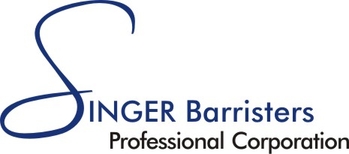Paralegals were among those directly affected by Friday’s shooting at the A. Grenville and William Davis Court in Brampton.
At about 11 a.m. Friday, March 28, a man entered the security area. An altercation took place between the man and a Peel Regional Police officer. The man was killed. Constable Mike Klarenbeek remains in hospital recovering from a gunshot wound.
Paralegals witnessed the events and the aftermath. Last year’s Paralegal of the Year, Elaine Page, offers some tips and advice for those directly affected by the courthouse incident, and for all legal services providers.
Here are some of Page’s tips. Others may have more advice, and examples of ways they have managed with violent incidents, or diffused situations that could have escalated. Things don’t always go smoothly; paralegals can help each other feel less vulnerable.
“Courts are by their very nature adversarial, and emotions may run extremely high,” Page notes. “We often see our courtroom appearances as a battleground, and view them as a detached intellectual exercise. We sometimes forget that while we are busy outmanoeuvring our opponents, our clients are experiencing a high level of anxiety, frustration and emotion. As that level escalates then so does the probability that a problem can occur.”
Information is Strength
Paralegals may be vulnerable because we lack crucial information about our client, the parties or witness who may have a mental health issue, or a history of violence.
“When you are interviewing your witnesses or clients look for clues,” Page advises. “For example, if, through the course of your communication with them, they have bragged about violent behaviour, seem overly emotional by “normal” standards, or otherwise give you an impression that, while you might be representing them, you wouldn’t want them to know where you live, chances are they could be a problem.”
If you sense a risk, don’t go it alone. “You can and should ask security to remain in the courtroom throughout your hearing, and if need be escort you out of the building when the matter is over,” Page notes. “The court will abide your request, as they have a vested interest in keeping the courtroom as safe as possible.”
Don’t Go It Alone
More practical advice: Never take an elevator with the party from the other side, or find yourself alone with them. “If you need a bathroom and see them go in, wait until they are finished before you enter,” Page says. “The same holds true if your client is exhibiting behaviour that is questionable. While at the courthouse if you are witnessing a situation in the hallways escalating, seek out security before the situation becomes unmanageable.”
Civility is paramount, Page says. “Our clients take their clues from us. If we are shouting and carrying on then we are telling them that it is ok for them to. That goes for the way in which we treat our fellow licensees, and court staff as well.”
If you are in court and see one of the parties being belligerent to the Judge, get up and get security. Don’t wait for the Judge to hit their panic button — by then it may be too late, Page says. The same holds for other venues. “At the counters, the public can get frustrated, blaming the clerks for their misfortunes. If you are being served when this happens, tell the clerk that you need a moment to go get security. Not only will they allow you to do so, but they will appreciate it.”
Stay Alert, Stay Safe
If you see briefcases or other objects that appear to be unattended for a period of time, alert security. This is particularly important in courts and tribunals where there are no metal detectors or X-ray machines.
If you see a colleague who appears to be in trouble — step in and help them out, Page says. “Over the years many of my colleagues have escorted me to my car and to them I am always grateful.”
To anyone who was at the Brampton courthouse on Friday, Page offers some hard-earned advice: “I want you all to know that it does get easier, and whatever you are experiencing is normal. People who have not lived it cannot imagine it. There is no shame in admitting your fear and your apprehension. You need to process it as best as you can, surround yourself with things that make you comfortable, stay away from alcohol and drugs, share how you are feeling with people who will listen to you, and if you need help there is absolutely no shame in getting it. It does get better, I promise.”
Helpful Resources Include:
Member Assistance Program
Offered by the Law Society to members and their families, MAP matches trained volunteers with licensees who need someone to help them through the tough times.
Know When to Step In
Litigator Darryl Singer wrote a column for SCOPE about depression in the legal profession. Learn the warning signs, and how to help a colleague who seems to be struggling with this issue.
Unwarranted Anxiety or Instinct?
The Gift of Fear, by Gavin de Becker, is a non-fiction work that is surprisingly helpful for anyone who finds it tough to feel safe in an unsafe world. It focuses on practical advice for everyday situations, encouraging us all to trust our instincts as the best way to recognize danger and predict violent behaviour. As de Becker notes: “True fear is a gift. Unwarranted fear is a curse.”
by Elizabeth Published on Paralegal Scope Magazine
